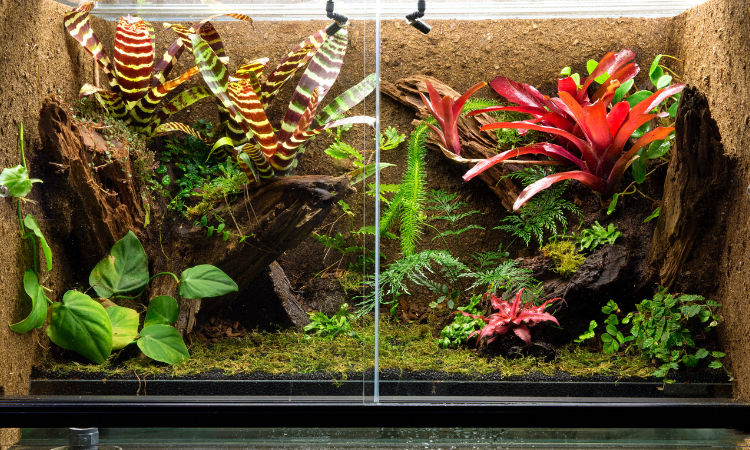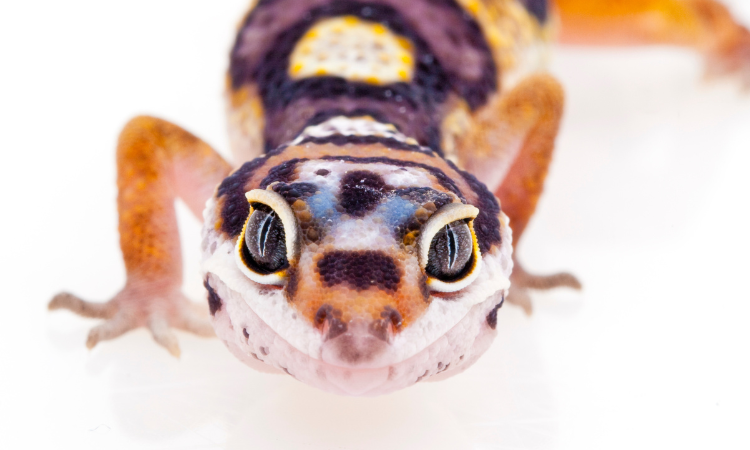Leopard geckos are one of the most popular reptile pets. They’re small, docile, and relatively easy to care for. But what about their tanks? Can a leopard gecko tank be too big? Let’s take a look at what experts say.

Yes, a leopard gecko tank can be too big. If the tank is too big, the gecko may feel stressed and not have enough places to hide.
A leopard gecko tank that is too large can cause stress to the gecko living in it. Without enough places to hide, it can feel as though it has nowhere to go when feeling scared or threatened.
The gecko’s environment needs to be small enough that it can feel secure and have easy access to its food and water sources, such as hiding spots, warm areas, and cool areas. Providing the gecko with a comfortable space that meets its needs is essential for its well-being.

A bigger tank also means more work for you in terms of cleaning and maintenance.
If you’re gecko parent, you’ve likely considered getting a larger tank for your scaly friend. Bigger tanks offer geckos more space to explore and exercise, giving them a better quality of life. However, it’s important to remember that along with the size increase comes increased responsibility for cleaning and maintenance.
Tanks that are bigger than normal require plenty of scrubbing and checking for debris or hatched eggs, something which can become laborious when done regularly.
Before taking the plunge with a bigger gecko tank, make sure honesty consider what it will take to keep the habitat clean and safe for your gecko before making the purchase.
The best size for a leopard gecko tank is 10-20 gallons. This gives the gecko plenty of space to move around without feeling overwhelmed.
The leopard gecko is an incredibly popular pet, and thankfully its housing needs are easy enough to meet. It’s recommended that geckos be kept in a 10-20 gallon tank – this provides just the right amount of space for them to move around without feeling overwhelmed or uncomfortable.
Ensuring that your gecko has plenty of room to explore will help him thrive and will create an environment your gecko will enjoy. You don’t need much to get your gecko started on the right track – a 10-20 gallon tank and the necessary supplies will set both you and your gecko up for success.

If you have a larger tank, you can still make it work by adding more hiding spots and using smaller decorations.
For gecko owners with a larger tank, don’t despair! You can still make it work for your gecko by adding more hiding spots, as geckos feel secure when they have somewhere to hide. While large decorations may be tempting, try selecting smaller items like rocks and branches which will fit neatly in the tank.
Aside from giving the gecko places to hide and explore, this will also help create some interesting landscapes to make the gecko feel more at home. Enjoy the creative process of decorating your gecko’s home and watch them take comfort in their new surroundings.
In summary, when setting up a leopard gecko tank, size is a very important factor. A tank that is too big can lead to feelings of stress and insecurity for the gecko, and extra cleaning and maintenance for the owner.
Aiming for a 10-20 gallon tank is the best size for your new friend to thrive. If you have something larger than that, though, it isn’t necessarily a lost cause as long as you provide plenty of hiding spaces and use decorations with which the gecko will feel secure.
Hopefully, this blog post has given you the insight you need to create an ideal setup for your leopard gecko so they have the best home possible.
Related posts:

Hi – I’m Erika, the lead gecko enthusiast here at Geckopedia! I write articles about pet geckos, including what to feed your leopard gecko and how to help your pet gecko live a long, happy life! I graduated with advanced degrees from UC-Berkeley, the University of Southern California (USC) and Indiana University-Bloomington, where I studied Biology and Animal Science. I use my experience to help others learn about gecko care, and I am an advocate for all topics gecko related!
